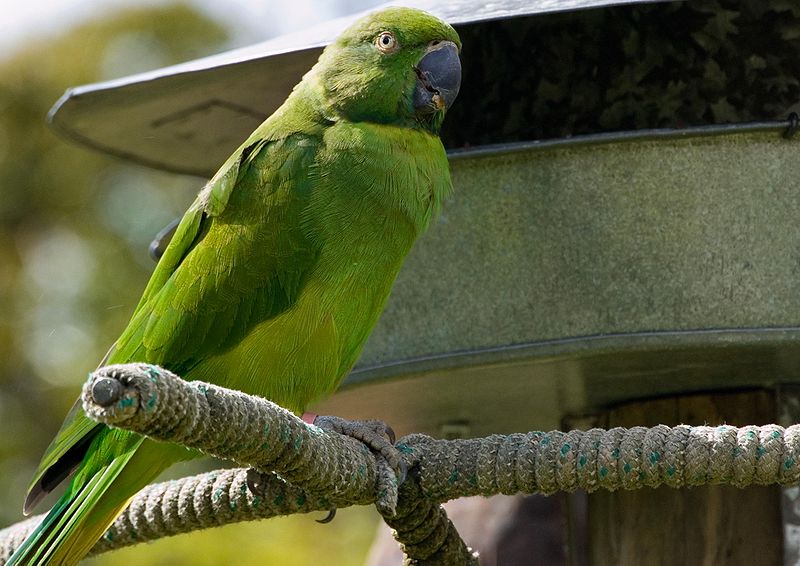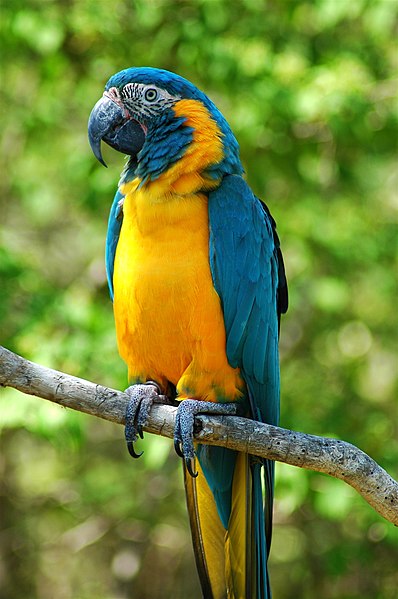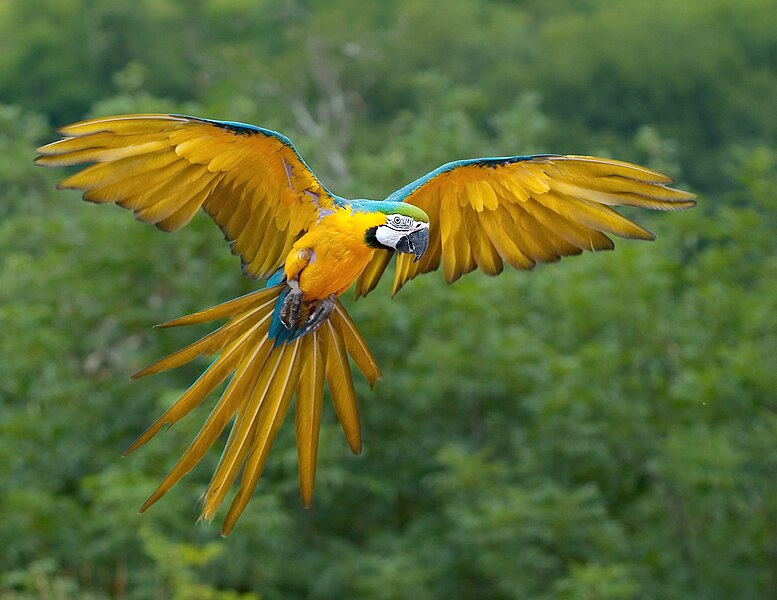 The Echo or Mauritius Parakeet (Psittacula eques) population was reduced to 10-12 individuals by the late 1970’s, and remained at similar levels into the next decade. Thus, it had the dubious distinction of being the world’s rarest parrot. Thanks to the efforts of the Durrell Wildlife Conservation Trust, the World Parrot Trust, and the Mauritian Wildlife Foundation, its future is now somewhat brighter. However, the Echo Parakeet is still one of, if not the, most endangered parrots on the planet, yet receives little of the attention granted the Kea and other better-known species.
The Echo or Mauritius Parakeet (Psittacula eques) population was reduced to 10-12 individuals by the late 1970’s, and remained at similar levels into the next decade. Thus, it had the dubious distinction of being the world’s rarest parrot. Thanks to the efforts of the Durrell Wildlife Conservation Trust, the World Parrot Trust, and the Mauritian Wildlife Foundation, its future is now somewhat brighter. However, the Echo Parakeet is still one of, if not the, most endangered parrots on the planet, yet receives little of the attention granted the Kea and other better-known species.
Former Home of the Dodo
The birds of Mauritius, a small island nation in the Indian Ocean, southeast of southern Africa, have a troubled history. The infamous and now extinct Dodo lived there, and the Pink Pigeon, Mauritius Kestrel and other endemics (species found nowhere else) are barely holding on. Read More »
 That Bird Blog – Bird Care and History for Pet Birds
That Bird Blog – Bird Care and History for Pet Birds




